December
The month started damp and cold with 11.4mm of rain on the 1st and a mean temperature of 4.8°C on the 2nd. There was an amazing sunset then, and a small murmuration of Starlings was seen again at dusk from the top of the field flying further up the valley. Previously seen at dusk on the 12th November, we are wondering if this is a regular occurrence and plan to check it out. Also on the 2nd, a flock of 90+ Linnets were seen flying over the crop and a large flock of Chaffinch were perched in the Ash tree at the top of the field. 3 female Pheasants and a Fox were seen in the crop as well as numerous small birds.
Despite the frost there were still Corn Marigolds flowering in the wild bird food crop on the 6th and the Heron was seen flying up from the river by the top bridge and then again in the rough grassland at the top of the field.
8th – The Barn Owl was seen at 5pm flying from the Wildlife Tower over the Orchard towards the barn.
On the 10th, Devon Birds members ( DBWPS ) joined us for the first Winter Bird Walk of the year around the LLP which included a stop at the winter bird crop. Species recorded included 30+ Chaffinch, 2 Brambling (1 male, 1 female), 40+ Linnet, 3 Reed Bunting (1 male, 2 female), Blackbird, Blue Tit, Great Tit, Siskin, 1 Goldfinch and 1 Greenfinch. That evening, 3 fish were spotted by torchlight in the Flo Pond, 2 x 4” and 1 x 8”.
The Kingfisher was heard calling in the Orchard on the 12th and a Barn Owl pellet was collected from below the Stock Dove provision (at the back) of the Wildlife Tower. There are also several white splashes (Barn Owl droppings) on the ledge and on the rocks below. The pellet shows that the owl is catching wild food despite us continuing to provide extra food.
The 2nd Winter Bird Walk on the 17th was an open event and 12 people attended. Unfortunately, there were very few birds in the crop that day, although Mateo saw c. 40 Chaffinch, 10 Linnet and a pair of Bullfinches after the group had moved off to walk the Apprentice Path.
The cattle left on the weekend of the 18th having done a great job. Several fallen large branches and small trees making the Apprentice Path an obstacle course, were cleared on the 22nd.
December was the 2nd wettest month of the year with 196.4mm of rain over 23 days with the last week of the year providing 104mm, (October was the wettest- 210.4mm). The 29th was the warmest December day recorded here since 2006 at 15°C and the mean temperature for the month was 9.2°C (7.14°C). The lowest temperature recorded in the month was on the 2nd at 0.1°C, the average low for the month is -1.22°C
- Photo: Tony Utting
- Photo: Tony Utting
November
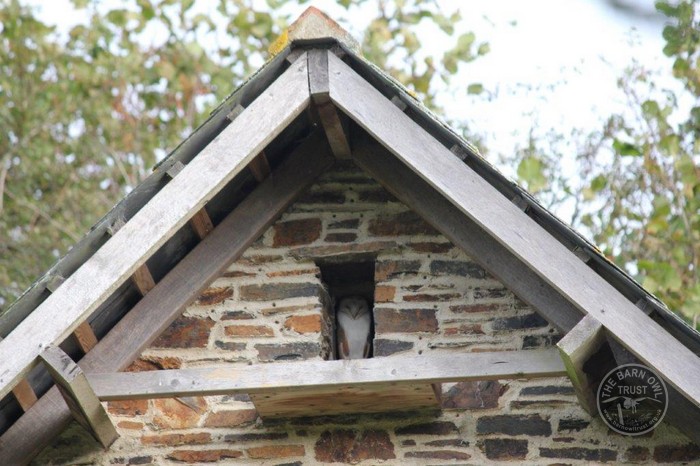
Our Head of Conservation says he’s “been waiting 11 years for this photograph”
On the 1st our management volunteers arrived: 8 Belted Galloways from a local farmer. The cattle will graze the rough grassland for a few weeks to stimulate growth and diversity, which is good for the Field Voles. Their impact will be monitored to ensure that sufficient ‘litter layer’ remains. On the 3rd, photographer Tony Utting visited and reported seeing Green Finch, Chaffinch, Great Tits, Blue Tits and Linnets feeding on the bird food crop.
At dusk on the 3rd, a rehabilitated juvenile Barn Owl was released from the mobile aviary in North Park having spent two weeks acclimatising there. It was still around and taking food a few days later.
On the 8th, a Barn Owl was seen during the day sitting in the owl hole of the Wildlife Tower, almost certainly the released bird.
A great view of a Heron flying low up the valley over the office, making its way towards the ponds on the 9th. A flock of 30+ Chaffinches was also seen on that day, flying from the crop into the adjacent North Park hedge. The first hedge-laying of the winter also began on the 9th, with two volunteers working with Mateo on the North Park hedge. Annie and Clarabelle (the goats) enjoyed the company and chewing over the cleared material.
On the 11th, the Barn Owl was seen in the Wildlife Tower again. At dusk on the 12th a murmuration of Starlings was seen from the field further up the valley. This is an unusual occurrence here. Just afterwards a Barn Owl was seen flying from behind the Wildlife Tower into the mobile aviary. At 2:30pm the following day, a Barn Owl was again seen sitting in the owl hole of the Wildlife Tower. On the 14th at dusk, it flew out of the aviary down the valley, over the office, and disappeared by the barn. Later it was seen flying out of the barn by the hospital aviaries.
On the 15th, the Barn Owl was again seen sitting in the owl hole of the Wildlife Tower during the afternoon. On the 17th, University of Plymouth Students Union volunteers cut back the encroaching Blackthorn from the roadside boundary below the Polebox. About 30 Linnets and 20 Chaffinch were seen in the crop by Pennsland Lane. Also on the 17th, we saw the first fish for a long time, in the Flo Pond in torchlight in the evening, a 4-inch brown trout and on the 21st, again in torchlight, we saw an 8 inch one. We think they probably came in via the abstraction from the river as eggs or fry and they must have been there without us spotting them for some time, to reach that size.
Corn Marigolds were still flowering in the bird food crop on the 22nd and there was also Fodder Radish in flower although most plants now have ripe seeds. Flocks of Linnets totalling 100 + are being seen regularly, as are Pheasants (mainly female), feeding on the crop. The number of Meadow Pipets has been swelled by winter migrants, boosting the numbers in the rough grassland to about 30.
Another small section of the North Park hedge was laid with the help of a volunteer on the 23rd and on the 30th the roadside hedges were cut back by our grazier.
Although we had 20 days in the month that recorded some rain, amounts were very small, except on the 26th when we recorded 12.4mm. The total for the month was just 35.3mm – the average here for November is almost 125mm. The mean temperature for the month was 8.9°C – about the same as the November mean, but the daily average temperatures varied between 4 °C and 12.6°C. We also recorded our highest (of 16 years) November wind speed here on the 27th: 43mph.
The released Barn Owl was still taking food from the aviary at the end of the month.
October
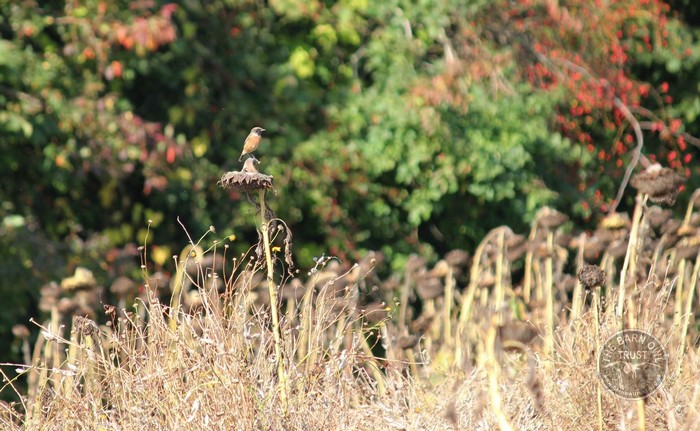
Stonechat on sunflower
A Roe Deer buck was seen grazing in the field on the 4th and there were several other sightings of Roe Deer in the middle of the crop during the month, including one emerging on the 24th. On the 23rd a Sparrowhawk was watched hunting over the crop. Pheasants have been taking advantage of the food availability and its not unusual to see half a dozen flying up when disturbed. Throughout the month, a Linnet flock have been seen flying over and feeding on the bird food crop and by the 25th the flock had swelled to 80+.
In mid-October we noticed lots of the fallen Oak leaves in Corner Wood had small, disc-shaped growths on the undersides of the leaves. These were identified as galls of the Common Spangle Gall Wasp. This is a tiny wasp, (Neuropterus quercusbaccarum) that causes a growth, or ‘gall’, on the underside of oak leaves in early autumn. It is common and widespread, and a single leaf can host up to 100 galls, each containing a single larva. The galls fall to the ground and can be seen around oak trees during autumn. The larvae continue to develop through the winter, they emerge as adults in April.
The daily mean temperature for the month varied between 11.1°C and 17.7°C until the 21st when it dropped to 9.5°C and then 8.7°C before starting to climb again.
The overall mean temperature for the month was 13.1°C (16-year average 12.2°C) and we had 210mm of rain, almost double the average of 120mm, over 23 of the 31 days.
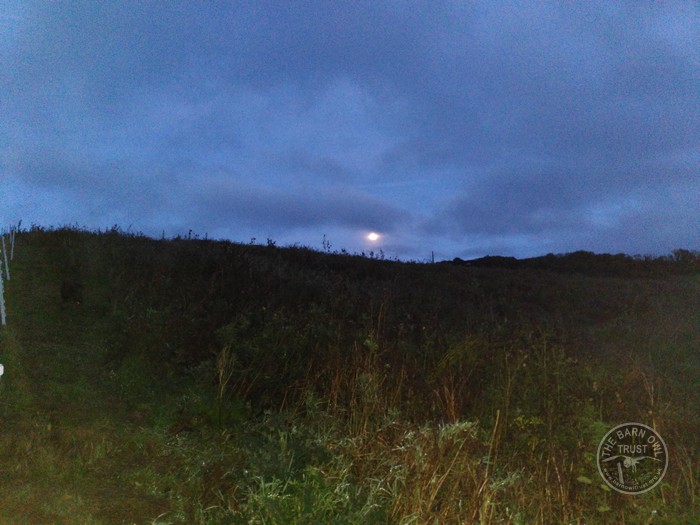
Moonrise over LLP
September

Barn Owl in pole box Photo: Tony Utting
The month began dry and mild and, on the 6th and the 7th, we recorded temperatures over 25°C. In the whole of August, the highest we recorded was 22.5°C! By the beginning of the month most of the sunflowers had faded and were drooping their heads. The bird food crop was beginning to look shorter as some of the plants died back and the cereals became more evident. On the 3rd a Dipper was seen on the river from the Apprentice Path, about halfway between the two bridges, this is the first sighting for some time. It flew off upriver and was lost to view.
On the 6th a Hobby was seen flying over the field. Ambios trainees joined us on the 8th and were helping to count Creeping Thistles for the research project in Kiln Close, in the drizzle, when they spotted a Barn Owl emerge from a neighbouring conifer. It flew to an Ash tree on our boundary hedge and began taking a shower. They watched it stretching and preening in the rain for about 10 minutes before it returned to the shelter of the conifer.
Mateo and volunteer Harry began pulling the Reed Mace out of the Flo Pond and clearing the island and the overgrown margins on the 14th. Later that day at 7:30pm, a Barn Owl was seen sitting on the tray of the Polebox by the roadside hedge. When it spotted the humans walking down the Long Path it popped into the box. The Polebox is very close to the site the Barn Owl was seen on the 8th so it very likely was same bird.
It looks like one of our released owls didn’t make it. On the 23rd Barn Owl feathers, skin and some tissue were found near the solar panel array. The flight feathers had been bitten through, suggesting a fox, the plumage suggested a male. After this, one of the released birds was photographed in the Polebox .
On the 27th a Sparrowhawk was seen attempting to catch one of the Linnets feeding on the crop. Groups of Linnets totalling at least 30 were seen regularly visiting.
On the 6th September we recorded the highest daily temperature for the month in 16 years of monitoring: 25.7°C (average high 21.93°C). The mean temperature for the month was 15.8°C, compared to our average of 14.1°C. We had 93mm rain over 18 days (average 57.8mm over 15.6 days). More than half of the rain, 51mm, fell on the 28th
August
By the 2nd the Sunflowers were really beginning to put on a show. In the sunshine the crop could be heard humming with the insects visiting the flowers. The Fodder Radish, no longer dominating the crop area, had formed large seed pods and Wheat, Barley and Triticale could be seen along the edges. On the 3rd we had our first sighting of Linnets returning to the area when a flock of 10+ flew up from the crop, one even perching on the edge of a Sunflower. A few days later there were 20 Linnets and by the middle of the month, 30.
 The two owlets, received at the beginning of July as naked babies before their eyes opened, were ringed and put in a nestbox at four weeks old. They emerged for the first time on Saturday 21st and one of them flew off the barn roof and into the field, it then spent the following day roosting in the neighbouring Ash tree. On the 23rd it was back in the nestbox with its sibling.
The two owlets, received at the beginning of July as naked babies before their eyes opened, were ringed and put in a nestbox at four weeks old. They emerged for the first time on Saturday 21st and one of them flew off the barn roof and into the field, it then spent the following day roosting in the neighbouring Ash tree. On the 23rd it was back in the nestbox with its sibling.
On the 23rd a flash of a Kingfisher was seen on the River just above the lower bridge, the first we’d seen for some time.
 On the 24th we recorded our 11th LLP record of Wall Brown Butterfly; it was seen along the North Park hedge walk just north of the Wildlife Tower.
On the 24th we recorded our 11th LLP record of Wall Brown Butterfly; it was seen along the North Park hedge walk just north of the Wildlife Tower.
We recorded 10% more sunshine in the month than last August and our mean temperature for the month was average, 13 days with some rain just over 43mm (16-year average 16.7 days and 83mm) however our highest temperature recorded was 22.5°C, 2°C lower than our 16-year average.
July
The first Marbled White butterfly appeared on the 1st and by the beginning of July the Forage Radish in the wild bird food crop was over a metre high and dominating the area with its white flowers. Corn Marigolds were starting to flower in the nectar strip and within the maincrop. On the 3rd the first Cornflowers were seen flowering and a Roe Deer was seen emerging from the centre of the crop where it had been lying up.
The Butterfly Walk on the 7th went ahead with just one visitor who was delighted with the site and its flora and fauna. The wet weather so far this month (51.2mm of rain by 8thcompared to a monthly average of 66.29mm) and the lower-than-average high temperatures (22°C) meant that we didn’t see the usual high number of butterflies. However, we did see Marbled White, Small Skipper, Six Spot Burnett Moth, Meadow Brown and numerous froglets, grasshoppers, other invertebrates and a Great Green Bush Cricket. We also saw the Roe Deer emerge from the middle of the crop again. After the walk, the first two Ringlet butterflies of the year were seen.
Also on the 7th 30+ Himalayan Balsam plants – a harmful, non-native invasive weed – were pulled from the area near the Holly hedge.
By the middle of the month the Winter Bird Food Crop area which had been white with Fodder Radish flowers became yellow with Corn Marigolds coming into flower. Although we had only planted the seed in a narrow strip along one side of the crop the seeds must have been in the soil from previous years. We also started to see the sunflowers (planted with the main crop and in a 2-meter strip along the opposite side from the wild flower strip) starting to come up above the other plants. By the end of the month the first sunflowers were starting to bloom.
The Roe Deer was seen several more times emerging from the centre of the crop and once on the path adjacent to it. On sunny days good numbers of Large White butterflies could be seen dancing over the crop.
Marbled White numbers appeared to be lower than usual this month but we will check this when we analyse the data from the weekly butterfly transect.
The mean temperature for the month was 17.5°C this is above the average of 16.4°C recorded here over the last 16 years and was the third highest record we hold. Our highest temperature was 29.6°C, our 2nd highest record. We had 16 days with rain a total of 128mm (average 70.1mm) the third highest rainfall record here.
- Wild bird food crop July 2021
- LLP ariel view July 2021
- Froglet July 2021
- Small Skipper July 2021
June
This Roe Deer (Capreolus capreolus) was spotted grazing in the undergrowth on the 1st. On the 3rd a Small Heath butterfly (Coenonympha pamphilus) was seen and more were recorded on the 14th. Green Woodpeckers (Picus viridis) have been seen regularly feeding on the paths and on the 9th one was seen flying up from the long grass in North Park. The new path around the re-wilding area in North Park is looking magnificent. The number of Common Mullein (Verbascum thapsus) that have sprouted on the bare ground is amazing and on the 15th we noticed the Mullein Moth caterpillars, (Cucullia verbasci) had arrived. These stunning yellow, white and black caterpillars can completely strip the plants and then they hide in the soil to pupate and emerge as a surprisingly plain little brown moths.
- Common Mullein
- North Park path
- Mullein Moth caterpillar
By the 21st the Fodder Radish in the wild bird food crop was in flower and the whole area looked white, Sunflower plants were becoming visible and the Corn Marigold plants were prolific with the first buds visible. Our Midsummer evening walk was cancelled due to the weather but rescheduled for the 24th, the night of the full moon.
The walk went ahead (Covid safe) on the 24th with just 10 visitors, some from as far afield as Cornwall and Wales. Despite the building cloud, which meant we didn’t see the moon rise, the weather stayed dry until we’d finished. The walk was hugely appreciated by all the visitors who were really impressed with diversity of the land.
During the month we had 16 days with rain, a total of 70.6mm, more than our June average (65.45mm) but a lot less than last years 116.4mm. The mean temperature for the month was 15.4°C higher than the average of 14.64°C.
May
When we bought the land in 2001, almost 20 years ago now, the woodland floor was bare, with virtually no understorey. This was due to the sheep and cattle regularly sheltering under the trees. One of the first things we did was to fence off the woodland and in the area known as ‘Corner Wood’ we began to manage part of the land specifically for Bluebells which were there, but rarely flowered. This year, by the 5th they were reaching their peak.
The Hawthorn in the North Park hedge was starting to blossom by the beginning of the month and by the 5th there were the first signs of the wild bird food crop germinating. The large Great Sallow (Willow) branch which had been caught up in the Hedge above the Corner Wood gateway was pulled down with the tractor during April and cut up on the 5th. The wood was piled up to biodegrade beside the path, creating a great habitat for all sorts of insects and other wildlife.
On the 11th a brood of 7 Nuthatch were ringed in their usual box near the top bridge.
On the 17th we found a dead duckling on the Apprentice Path by the river. We weren’t sure of the species but had briefly seen a female Mallard on the pond earlier in the month. However, our neighbour reported several sightings of a female Mandarin duck around so we will check the duck box on the tree over the river for signs of nesting. Great Tits are nesting in the duck box on the tractor shed.
On the 17th and the 18th there were great views of a female Roe Deer sitting in the grass near the pole box by the Kiln close hedge. We think she may have had a fawn nearby as she ‘stayed put’, just watching us as we walked down the long path.
The first Cuckoo was heard on the 25th and on the same day 5+ Swifts arrived over the field.
We’ve been recording the weather here for 16 years and May was definitely the coolest and wettest we’ve seen. We had rain on 24 of the 31 days giving a total of 187.6mm, the average here is 74.5mm, and a mean temperature of 10.1°C compared to the 11.7°C average. Many plants are late appearing and at the end of the month the ‘May’ Hawthorn blossom was still stunning. The colder weather does mean that many of the flowers have flowered for longer and the paths are yellow with Buttercups. The ‘crop’ growth has been very slow so far.

Germander Speedwell, Bird’s-foot-trefoil, Common Fumitory, Common Vetch, Early Purple Orchid, Pink Purslane & Wood Speedwell on the LLP.
April
The 1st of April brought the first Chiffchaffs (Phylloscopus collybita) of the year to the LLP. During the first week of the month the wild bird food Crop area was mowed to prepare for ploughing on the 9th. A flock of 50+ Linnets (Linaria cannabina) were still around a couple of days afterwards. On the 3rd the first Stitchwort (Stellaria holostea) was seen in flower along the Pennsland hedge in North Park, where the Primroses (Primula vulgaris) are also putting on a good show, and on the 8th the first Bluebell (Hyacinthoides non-scripta) appeared in Corner Wood. The 6th saw the arrival of the first Swallows (Hirundo rustica) of the year and on the 10th and 11th the harrowing of the Crop area brought in 100+ gulls including at least 3 Lesser Black Backed (Larus fuscus) who soared noisily over the field behind the tractor.
This was the first opportunity to use our two vintage harrows, bought during lockdown. The disc harrow prepared the ground after ploughing, then the seed was sown by hand and the chain harrow covered the seed. The seed mix was Spring Barley/Wheat/Triticale, White/Red/Japanese Reed Millet, Fodder Radish, Dwarf Sorghum, Linseed, Gold of Pleasure, Dwarf Sunflower and Quinoa (some Quinoa sown on its own in the corners). Also, Common Poppy, Corn Marigold, Cornflower & Corn Chamomile, sown as a nectar strip along the South & East edges. Up to 6 Pied Wagtails have been in evidence every day since.
On the 15th when the wild bird crop seed was sown, the mean temperature for the month so far was just 6.2˚C compared to the 15 year mean of 9.2˚C for April. We had also recorded just 2.mm of rain over 4 days and several overnight frosts. We really need some gentle rain and warmer nights now to facilitate germination.
The weekly Butterfly transect restarted on 19th April but numbers are low because of the unusually cold weather.
The long-awaited rain arrived on the 29th with just 3.6mm recorded on the last two days of the month. This gave us a total of 5.8mm for the month, just 11% of the average (54.7mm). Although we had more dry days (24) than a usual April and like most of the UK, more sunshine hours there was a record number of ground frosts and our mean temperature was just 7 – our average over 16 years is 9.15. All of this makes it not surprising that there is no sign of the ‘crop’ germinating yet.
March
A flock of 50+ Linnets was seen over the bird food crop on the 2nd with several small groups of 5+ flying out to join them. You can hear last year’s recording of 500+ Linnets here.
On the 3rd, Matt and Mateo cleared the abstraction pipes (that feed the ponds) in the river and began pruning the fruit trees in the orchard. Very unusually, a rabbit was seen in the scrub at the top of Corner Wood. We rarely see them here and usually the only evidence that they visit are droppings on the path by the Holly hedge on the other side of the land.
The first Skylark of the year was seen and heard flying over the the airstrip and then landing in in the rough grass on the 5th and again on the 6th, when a flock of over 80 Linnets were counted flying up from the crop. On the 11th the first Dog Violet of the year was seen in the North Park hedge. The pruning of the fruit trees was completed on the 12th and we discovered the stream bed between the two ponds was leaking – again! The skylark is being seen and heard most days and on the 15th a Roe Deer was seen running along the bottom of the main field along the roadside hedge.
Matt and Mateo burned up the branches on the 17th from the hedge laying of the North Park hedge over the winter. They also dug out a sickly Plum tree in the orchard and replaced it with a Black Mulberry. This King James variety has gnarled bark and heart-shaped leaves that turn yellow in autumn. Three Field Voles were seen under a sheet of ply at the edge of the bird food crop area (where the solar energiser that sources the electricity for the electric fence sits), there was impressive matrix of runs under there! Walking through the crop there were countless burrows, probably mice, some of which had been dug out by Foxes or Badgers. The birdsong this month has been delightful, a chorus of Linnets with Great Tit, Robin and Blue Tit, and then there is the Skylark – glorious.
By the 26th the Blackthorn in the hedges and the Plum trees in the orchard were starting to flower and by the 30th were in full bloom. The top of the field is a carpet of Celandines shining out in the rough grassland. Also on the 30th David started mowing the crop to prepare for this years ploughing and seeding. However a broken hydraulic hose on the mower called a halt half way through. The Skylark, Linnets and Meadow Pipits were all in evidence as was a light breasted Buzzard perched on top of the redundant electric pole. A Roe Deer was also seen.
February
We began the month with completely sodden ground and the river level fairly high. We are having to clear the pipes in the river that feed the ponds, almost daily as they are blocking with leaf debris. When the water level drops we plan to clear them more effectively. On the 2nd, Mateo brush-cut more of the scrub in Corner Wood to enlarge the Bluebell patch and on the 3rd we found the first Primroses flowering on the woodland path. Between the 8th – 10th we had a mean temperature here below freezing and the biting north easterly wind dried out the ground for the first time in ages. By the 13th the rain was back and the ground became soggy and slippery again.
By the 20th more Primroses were in flower and the first Celandine was seen. The Bluebell leaves were also starting to appear in Corner Wood. No Linnets have been seen for a few days but there have been frequent sightings of Meadow Pipets flying up from the rough grassland. A Roe Deer was seen on 21st. The abstraction pipes in the river are still needing to be brushed off every day !
On the 25th, the first signs were seen of hatched tadpoles in the Flo Pond, although most of the spawn is yet to hatch. A Peacock butterfly was spotted along the Pennsland Lane Hedge. It was seen again on the 26th and 50+ Linnets were seen flying over the bird food crop and along the hedgerow.
We had 18 days with rain in the month, less than the last two years and below the mean. Total rainfall was 123.69mm (above the mean 113.69mm). The mean temperature for the month was 6.5˚C ( mean 6.97˚C) with a high of 14.2˚C and a low of -2.6˚C.
January
We started this year cold, with the highest temperature recorded (by the 6th) as 4.1˚C, compared to previous years’ average high of 12.94˚C. The mean for this year so far, is 2.6˚C whereas the mean for previous years is 6.23˚C, so a lot colder than usual at this time of year. At least its not raining and the ground is beginning to dry out after a very wet November and December. The Cattle left on the 31st December and the goats, Annie and Clarabell, were shut in Kiln Close on the 1st to browse that part of the land.
Despite the poor crop this year (winter bird food) we have seen Linnets most days and on the 5th we saw a flock of about 50 flying around the field.
On the 6th, the mobile aviary that had blown over during Storm Bella on the 26th December was pulled upright by the tractor. The clearing up outside the office was completed. This was needed after the tree surgeons came on the 14th December to reduce the crown of the Oak hit by Storm Alex on October 1st. It had been started but delayed due to the Christmas break. Another job awaiting completion is the clearing of the abstraction chamber which feeds the ponds, this has been silted up by the heavy rains in November and December.
Also on the 6th, the Heron was seen flying up from the Orchard ponds. Another LLP first happened on the 8th when two Herons were seen flying from the Orchard. The arrival of the frogs must be imminent as the Herons are regularly visiting, as evidenced by the droppings around the pond on the 13th.
The first frog spawn was seen in the Flo Pond on the 14th and in the Oakley Pond on the 15th. At least one Heron is visiting everyday and sightings are frequent. The amount of spawn by the 18th was much less than usual. We have no idea yet whether this is due to the Heron picking off the frogs before they spawn, that there may be more to come later or just that it is not such a good year. Time will tell as spawning dates here vary between the 8th January and 9th February.
On the 17th the first Primrose in flower was recorded in the Pennsland Lane hedge of North Park.
Frog Spawn dates:
- 14th January 2021
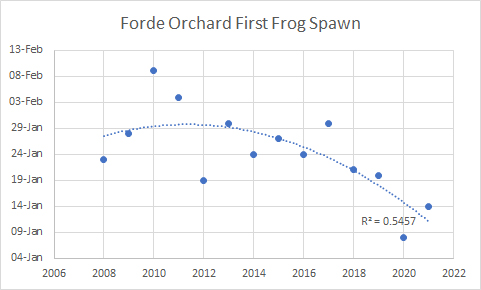
- 8th January 2020
- 20th January 2019
- 21st January 2018
- 30th January 2017
- 24th January 2016
- 27th January 2015
- 24th January 2014
- 30th January 2013
- 19th January 2012
- 4th February 2011
- 9th February 2010
- 28th January 2009
- 23rd January 2008
- 22nd January 2007
As you can see from the graph the trend is for the spawn here to be earlier every year.
We had good views of the Heron throughout the month and the amount of spawn in the ponds gradually increased. On the 27th Mateo cut the scrub encroaching on the Bluebell patch in Corner Wood and did some clearing around the ponds and both ponds were absolutely teeming with frogs. That evening we went out with a torch and camera. The following day the amount of spawn in the ponds had increased dramatically.
We had 20 days of rain in the month, a total of 144.4mm just less than the average since 2007. The mean temperature was 5.6˚C, the average for January here is 6.19˚C
![Llp frogs spawn [david ramsden] 270121 (a) 3](https://www.barnowltrust.org.uk/wp-content/uploads/LLP-frogs-spawn-David-Ramsden-270121-A-3-375x250.jpg)
- About the LLP wildlife haven
- How to manage land for Barn Owls and other wildlife
- Photo galleries


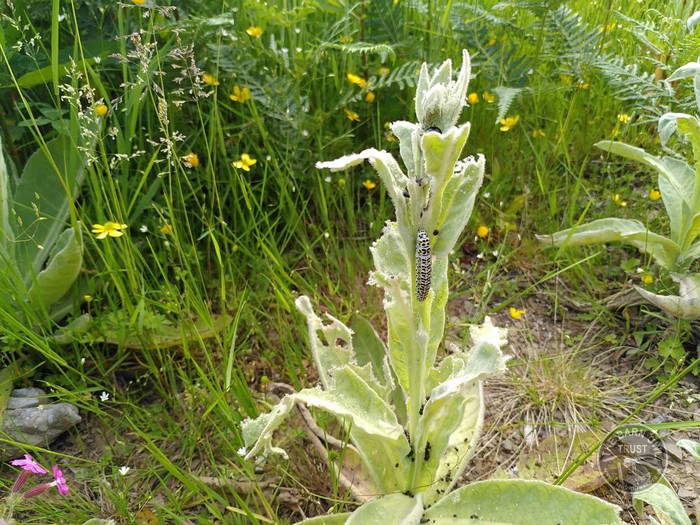
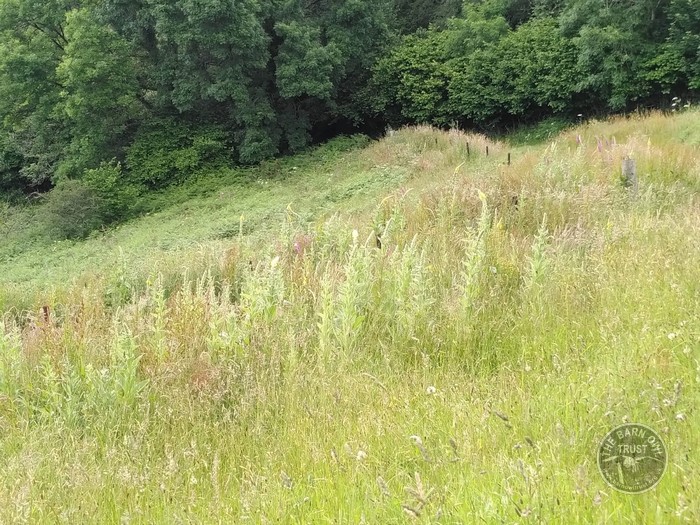
The Mullein in North Park
- Wildlife Diary 2023
- Wildlife Diary 2022
- Wildlife Diary 2021
- Wildlife Diary 2020
- Wildlife Diary 2019
- Wildlife Diary 2018
- Wildlife Diary 2017
- Wildlife Diary 2016
- Wildlife Diary 2015
- Wildlife Diary 2014
- Wildlife Diary 2013
- Wildlife Diary 2012
- Wildlife Diary 2011
- Wildlife Diary 2010
- Wildlife Diary 2009
- Wildlife Diary 2008
- Wildlife Diary 2007
- About our Wildlife Diary
- About the LLP wildlife haven











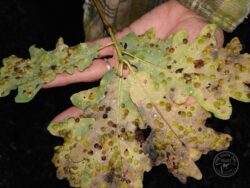

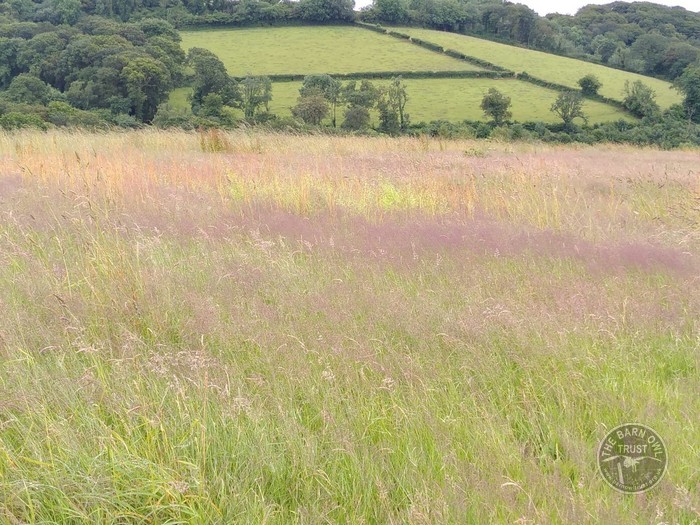
![LLP aerial bird food crop [david ramsden] 230721](https://www.barnowltrust.org.uk/wp-content/uploads/LLP-Aerial-bird-food-crop-David-Ramsden-230721-A-250x115.jpg)
![LLP aerial [david ramsden] 230721](https://www.barnowltrust.org.uk/wp-content/uploads/LLP-Aerial-David-Ramsden-230721-A-3-250x138.jpg)

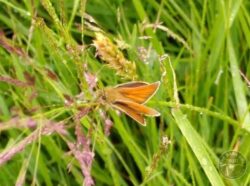


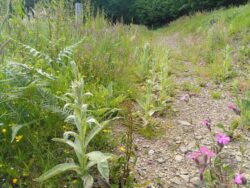
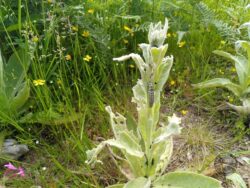





![Llp goats grazing [david ramsden] 021220 (a) 1](https://www.barnowltrust.org.uk/wp-content/uploads/LLP-goats-grazing-David-Ramsden-021220-A-1.jpg)
![Llp frogs spawn [david ramsden] 270121 (a) 5](https://www.barnowltrust.org.uk/wp-content/uploads/LLP-frogs-spawn-David-Ramsden-270121-A-5.jpg)
![Llp frogs spawn [david ramsden] 270121 (a) 2](https://www.barnowltrust.org.uk/wp-content/uploads/LLP-frogs-spawn-David-Ramsden-270121-A-2-375x211.jpg)

Comments are closed.